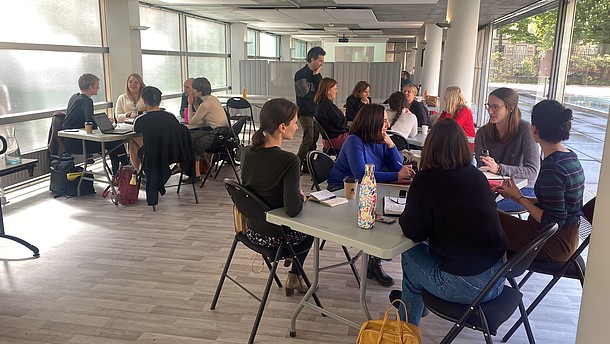During her presentation Elizabeth Rosenberg, NEMO, said that “Culture is one of Europe’s biggest assets. But in an era of big and fast technological change with massive corporations at the wheel, we need a more effective transformation strategy for museums that reaches across their activities and departments.”
She also added that “Looking at the new reality for museums with only a fraction of physical visitors, the digital offers will clearly maintain their importance beyond the crisis. Vastly reduced tourism in addition to safety measures means that the focus on quality over quantity becomes even more important. I think this will lead to museums using new metrics of success, away from visitor numbers to a broader assessment framework, that includes the digital extensions, that accommodates qualitative factors in the framework, that reflect museums’ social and educational potential.”
Looking to the future, she concluded that “Museums must ready themselves on behalf of their communities in order to weather future storms. Museums and society at large are obliged to invest in preparedness and responsive methods to future crises. Networks, if I may say so, are key in this aim, as they allow us to learn from each other and lean on each other. This of course includes preparation and mitigation for consequences of the climate crisis. We must not wait for the next crisis. Rather we need to be prepared for it.”
- Find NEMO’s report and other relevant resources online.
About Middle-digital earth: Museums between digital and emergency. Data, stories and impact
Museum institutions are seismographs particularly sensitive to changes in communities and relationships that define their identity through their relationship with cultural heritage. The global emergency of the COVID-19 pandemic has abruptly severed the contact between the public and the collections, highlighting the fragility of the heritage, of the management, prevention and protection systems, if the link with its users is broken. That COVID-19 was and is a new emergency that has put in danger not the cultural heritage in its material component, but has imposed a new everyday life, new comparisons and relationships with the public and professionals. An emergency that has touched almost all the museums in the world that with different times and methods have been forced to close to visitors, suspending all activities in attendance. The contact with the public has only been remote, for this reason the online initiatives of museums have increased, the presence on social networks and real digital workshops have been activated to design content, experiment and plan new medium and long term strategies.”



